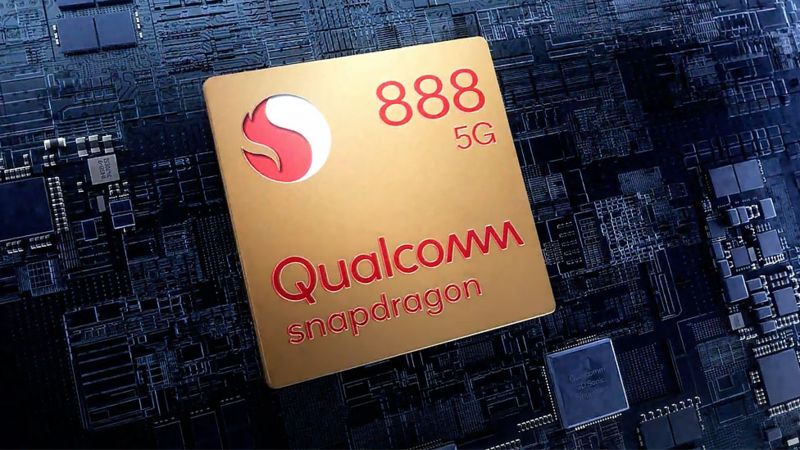It says the Snapdragon 888 will let handsets take high-resolution photos faster than before and perform AI-related tasks more efficiently. Devices powered by the chip should be on sale by March.

The Snapdragon 888 is Qualcomm’s first chip to be made using a five nanometre process. This is a reference to the fact its transistors are smaller than before and can therefore be packed more densely together to offer performance gains.
“The chip can capture, roughly 120 photos at 12 megapixels resolution – up to 35% faster than the previous generation.”
Apple’s iPhones recently launched with processors based on a similar technology manufactured by Taiwan’s TSMC. But Qualcomm has opted to have its chips made by Samsung’s semiconductor division despite the fact that TSMC produced its earlier flagship 865 and 855 ranges.
“Snapdragon 888 will… transform smartphones into professional cameras,” said Qualcomm in a press release.
If the firm had followed its previous naming convention, it would have been numbered the 875. One expert suggested the decision had significance.
“It may point to Qualcomm extending an olive branch to those in the industry caught up in the ongoing China-US trade war,” suggested Deborah Petrara from ABI Research.
“888 is regarded by the Chinese as a symbol of fortune and prosperity, which will also undoubtedly chime well with Qualcomm’s expectations of success.”
Over recent months, Huawei has been blocked from getting its own Kirin smartphone chips produced as a result of US restrictions.
California-based Qualcomm was recently given permission to sell its 4G-based chips to Huawei as an alternative.
This would not cover the new chip – which contains an integrated 5G modem. But in time the export rules may be reduced further under the incoming Biden administration.
Qualcomm said other Chinese vendors – including Xiaomi, Oppo, One Plus, Meizu, Nubia, Vivo and ZTE – had already shown “support” for the Snapdragon 888 ahead of announcements of their own.
One concern for Qualcomm is that if anti-US sentiment grows, handset manufacturers might switch to alternative chip designers.
Taiwan’s MediaTek and its Dimensity chips and South Korea’s Samsung and its Exynos processors would be the main options.
Another advance is that the 5G modem is now built into the chip rather than being a separate component, as was the case last time round.
This should make more room for other parts inside smartphones, where space is at a premium.
“Consumers will see significant improvement in coverage and performance given the blend of technologies that Qualcomm is integrating,” added Geoff Blaber from the CCS Insight consultancy.
Source: BBC














